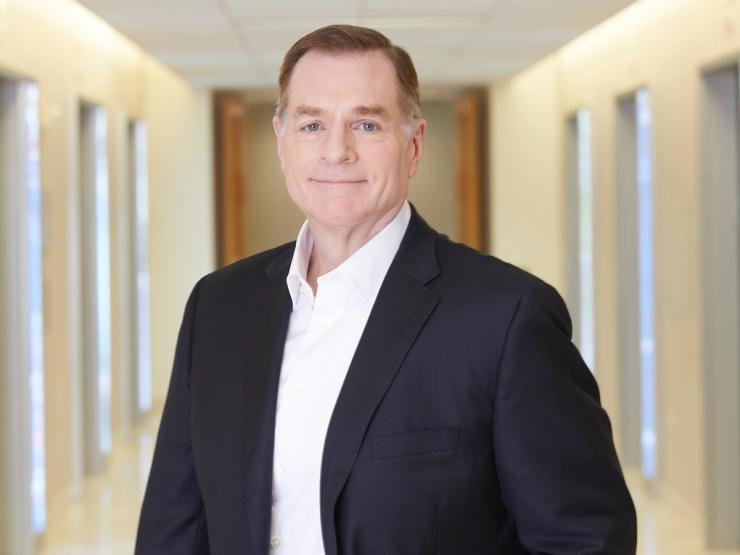The Scene
Greg Case remembers predicting in 2005, when he became CEO of Aon, that volatility-driven risks would intensify for the insurance broker’s clients. “We said they would 20 years ago, but, my God, we could have never imagined how intense they’ve become,” he says.
The insurance brokerage, which competes with the likes of Marsh McLennan and Arthur J Gallagher and is valued at more than $76 billion, sees four “megatrends” around trade, technology, weather, and the workforce converging to produce unprecedented uncertainty for businesses around the world. Case’s response has been to invest $1 billion in analytics to equip the more than 60,000 people who work for him with insights that will help clients “defend the house and build the house” — mitigate risk and find growth amid the volatility.
At the Milken Institute Global Conference earlier this month, Case published one product of that investment in research — a three-year study of more than 50 million US health care claims, which aimed to evaluate the effects of GLP-1 weight management drugs. Its findings, Case says, were “profound” — over two years, GLP-1 users were 44% less likely than a control group to be hospitalized by strokes or heart attacks, and submitted fewer claims for conditions from pneumonia to osteoporosis.
Employers have been struggling to contain increasing health care costs in a country where about 40% of adults are obese. But Aon also observed that medical spending growth was seven percentage points lower for GLP-1 users by their second year of using these costly medications than for the control group. That is a dramatic shift for an industry like insurance, where companies are usually trying to “bend the cost curve” by shaving just 20 or 30 basis points off rising expenses, Case notes.
Aon has used the data to offer weight loss medications to its own employees at a heavily discounted rate. Case told Semafor the research illustrates a broader point, however: “We must evolve faster than our clients on the topics that matter to them. Otherwise, we can’t be relevant to them.”
This interview has been condensed and edited for clarity.
The View From Greg Case
Andrew Edgecliffe-Johnson: What’s the biggest challenge your clients are dealing with now?
Greg Case: The level of uncertainty is at an all-time high, and hope is not a strategy. You need facts. You need analytics. As an example, we did a webcast recently around the implications of tariffs on risk, and we didn’t know who would show up. Within 24 hours, we had 3,700 clients show up. What our clients want now is to understand risk at a level that they can do something about it.
How do you differentiate Aon in the minds of your clients?
It’s about doing things that will help them succeed. For example, our clients are struggling with the cost of [covering] GLP-1 [prescriptions]. And we did a piece of analysis that has, we believe, highlighted a next generation opportunity to both improve health and bend the curve. We looked at 50 million [Americans] on company-sponsored plans and their dependents and compared the adherent GLP users to a ‘digital twin’. The GLP users saw a 50% reduction in the growth curve, a seven-point improvement in trend. This is crazy. This is amazing. It’s a way for us to reveal to our clients what’s really going on. They needed an answer. You know, we have a number of clients who are ready to stop supporting the GLP drugs. And as they understand there’s an improvement potential and a chance to bend the curve, honestly, [the implications are] absolutely profound.
What is the biggest thing you’ve learned over 20 years as a CEO?
I’ve learned over time the dumb little phrase, “Momentum never sleeps.” It’s either going up or going down, and the moment you think you’re going to maintain momentum without active leadership and management, you find it goes down. It never sleeps, and it’s a managed outcome.
The key question is, how do you create elevated capability at scale? And that isn’t about the CEO. That’s really about frontline leaders who actually carry the message, understand what’s going on, and then innovate capability. So for me, it’s about how I enable that process. and reinforce it and make it more effective.
What do you look for when you’re hiring for the C-suite?
You’re looking for change agents. What you’re looking for is someone who’s got great curiosity, great capability, but also tremendous awareness that they’re going to be effective if they can build capability. It’s not about them. It’s about their ability to help others succeed.
They’ve also got to be able to look forward to what’s coming next. So it’s not to achieve in the here and now, but to achieve over time.


